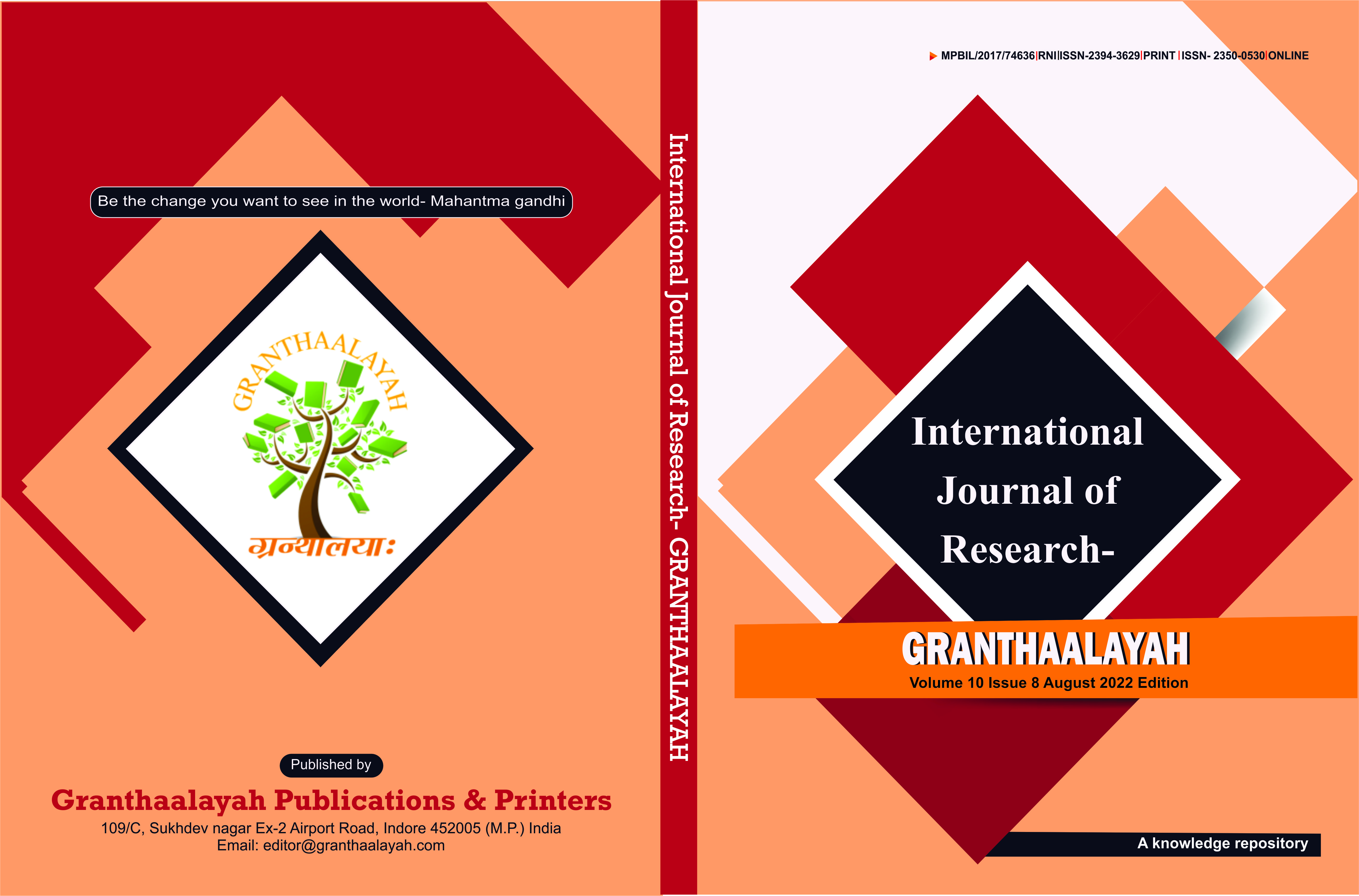FLORISTIC COMPOSITION AND PLANT DIVERSITY ANALYSIS OF ANBESSA FOREST IN WESEREN ETHIOPIA AND ITS CONRTIBUTION TO BIODIVESRITY CONSERVATION
DOI:
https://doi.org/10.29121/granthaalayah.v10.i8.2022.4746Keywords:
Plant Diversity, Floristic Composition, New Records, Endemic Species, Biodiversity ConservationAbstract [English]
The study was conducted at Anbessa forest in Western Ethiopia with the objectives to make an assessment of plant diversity and plant community. A systematic sampling technique was used and a total of 30 sample plots each with 20 x 20 m were laid along the altitudinal gradient. A total of 118 plant species were identified which belong to 93 genera in 46 families. Out of which 14.41 % were Fabaceae (17 species), followed by Asteraceae 11.86 % (14 species), Poaceae 8.47 % (10 species) and Lamiaceae 5.93 % (seven species). Out of the 118 identified plant species, 33.05 % were trees, 11.86 % shrubs, 11.86 % climbers and the rest 43.22 % were herbs. The present study reported nine endemic plant species are present in Anbessa forest. Moreover, 29 plant species were recorded as new records for Wellega floristic region from Anbessa forest. Four plant communities were identified. In Anbessa forest Combretum collinum - Dombeya quinqueseta -Securidaca longepedunculata community was the most diverse community, whereas Oxytenanthera abyssinica - Combretum molle - Syzygium guineense subsp. macrocarpum community was the lease diverse with H′ 0.16. The result showed that, Anbessa forest can play a significant role in biodiversity conservation.
Downloads
References
Berhan, T. (1991). Diversity of the Ethiopian Flora. In J. Engels, J. Hawkes, & M. Worede (Eds.), Plant Genetic Resources of Ethiopia, 75-81. Cambridge : Cambridge University Press. https://doi.org/10.1017/CBO9780511551543.005. DOI: https://doi.org/10.1017/CBO9780511551543.005
Environmental Protection Authority (1997). Conservation Strategy of Ethiopia. Environmental Protection Authority, Addis Ababa.
Ethiopian Forestry Action Program (1994). Final Report Volume II - The Challenge for Development and Volume III - Issues and Action. Ministry of Natural Resources Development and Environmental Protection, EFAP Secretariat, Addis Ababa.
Ethiopian Population Census Commission (2007). The Third National Population and Housing Census. Central Statistical Agency, Addis Ababa.
Food and Agriculture Organization of the United Nations (2015). Global Forest Resources Assessment (GFRA), Country Report Ethiopia, Food and Agriculture Organization of the United Nations, Rome, Italy.
Hedberg I., Friis I. and Persson E. (2009). Flora of Ethiopian and Eritrea, Vol. 8. General Part and Index to vols 1-7. Addis Ababa, Ethiopia and Uppsala.
Herrmann, C., Cribb, P., & Demissew, S. (2007). The Orchid Flora of Benishangul-Gumuz (Western Ethiopia) : An Ecological and Phenological Study. Selbyana, 28(2), 123–136.
Institute of Biodiversity Conservation (2005). National Biodiversity Strategy and Action Plan. IBC, Addis Ababa, 103.
Kent M. and Coker P. (1992). Vegetation Description and Analysis : A practical approach. New York : John Wiley and Sons, 363.
Mueller-Dombois, D. and Ellenberg, H. (1974). Aims and Methods of Vegetation Ecology. New York : John Wiley and Sons.
Van der Maarel, E. (2004). Vegetation Ecology. Wiley–Blackwell.
Published
How to Cite
Issue
Section
License
Copyright (c) 2022 Tamene Yohannes, Sebsebe Demissew, Mekuria Argaw , Sutuma Edessa

This work is licensed under a Creative Commons Attribution 4.0 International License.
With the licence CC-BY, authors retain the copyright, allowing anyone to download, reuse, re-print, modify, distribute, and/or copy their contribution. The work must be properly attributed to its author.
It is not necessary to ask for further permission from the author or journal board.
This journal provides immediate open access to its content on the principle that making research freely available to the public supports a greater global exchange of knowledge.

























